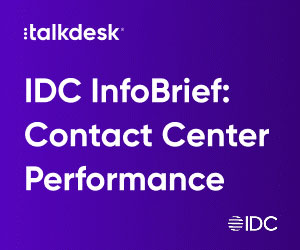Andrew Tucker at Cirrus shares insights on how customer service can be improved using familiarity.
When it comes to customer engagement, housing providers benefit from a relatively informed position compared with others within and beyond the public sector.
At a time when every agent is busy and there’s still a growing queue of tenants waiting to speak to someone, there may not be much comfort to take from being just informed, yet we truly believe that when it comes to service-user engagement, social housing providers are looked at with envy from afar.
For many contact centres across other sectors, they have no real control over who is contacting them, when they are contacting them or why they are calling. It is a world of unknowns that creates a highly unpredictable environment in which to operate or optimise for better service efficiency.
However, within our sector, many of these typical unknowns are actually known. You know who will be contacting you – the residents in the homes that you manage. You know the main reasons why they call you – for rent payments, housing repairs, complaints or to chase progress on a case.
You can even predict when they’ll be calling you – when a rent payment is due, when they’re waiting for a repair or when cold weather hits, thereby generating an influx of calls about broken boilers.
The somewhat predictable nature of the engagement that exists in social housing is a great advantage and an opportunity to improve efficiency, increase accessibility and deliver the best customer experience matched by great value-for-money.
Why Is Service-User Engagement So Critical?
There is still a housing crisis in the UK, compounded by the economic uncertainty of the pandemic. At the same time, housing providers remain under pressure to demonstrate value for money within the communities they serve and be accountable to their tenants.
We believe this can be achieved by taking the unique advantage of the fact that you already know your service-users and applying smart omni-channel customer engagement technologies to transform accessibility, efficiency and experience.
What are the challenges in driving this engagement efficiency?
There’s lots of talk about digital transformation within our sector and although many organisations are embarking on digital journeys, there are many factors that are slowing down progress, especially in the area of customer engagement.
We see three main blockers to progress, all of which can be easily overcome.
1. The Need to Be Inclusive
Our sector’s customers span a broad spectrum, from the young to the old, from the independent to the vulnerable.
This is leading to an overly-cautious approach to channel shift, with the fear of its detrimental impact on inclusion; different thinking is needed here, moving from viewing it as ‘channel shift’ towards thinking of it as ‘channel choice’.
2. The Silo Legacy
Housing providers typically have a plethora of systems, including housing management, CRM, case management, repairs and finance. This not only makes it difficult to gain a single view of customers, but also affects front-line staff.
Housing providers therefore need a solution that bridges the gap between operational systems and data silos to deliver a unified desktop for front-line (and other) staff.
For example, according to ContactBabel, 70 per cent of housing contact-centre agents spend at least 10 per cent of their time just flicking between systems and screens.
3. Too Busy for Innovation
The housing sector is often just too busy with ‘business as usual’ to spare the time to look for innovative and smarter ways to address its challenges; this is probably the most critical blocker to smarter customer engagement.
For example, using a knowledge base to empower your front-line staff to deal with more queries first time, rather than passing them from one department to another, will have a tremendously positive effect on engagement and service.
Or using chatbots and artificial intelligence to deliver 24/7 self-service will enable those who want to interact digitally to do so at a time and place of their choosing.
The vision outlined here has several steps that can be achieved through a modern, cloud-based omni-channel solution and by working with the right partner who understands customer engagement and, equally importantly, the social housing sector.
The Importance of Choice
As stated earlier, the sector is demographically diverse, so give your tenants choice in how they can interact with you: leverage the knowledge of your tenants to better route and service them; offer self-service to those who prefer it; proactively message those who are likely to chase progress on a case; and prioritise calls from vulnerable tenants.
But that choice must be also delivered alongside a vision of proactivity. You know why tenants call you, so send them updates on their outstanding case or repair.
Send them reminders and a link to online payments, offer them ‘chat’ to help them through their first time using self-service, and if you know there is going to be a cold spell, make sure you have the capacity to respond to the influx of calls.
Traversing Multiple Paths
Don’t think about communication in terms of isolated channels, but as one journey that can traverse multiple paths. By leveraging a solution that can support any channel, you instantly provide a more efficient and effective service.
An agent who can see every conversation across every channel is better able to serve your customers, and an agent who can simultaneously engage with multiple customers over chat is far more productive.
By providing these agents with one solution that unifies all of your disparate data sources to deliver a single view of your customers will make them more productive through spending less time flipping between systems and more time engaging with customers.
Combine this with a knowledge base and they can answer more enquiries first time.
Ultimately, to transform customer engagement, you first need to fully understand customer engagement.
By exploring opportunities to capture your customers’ end-to-end journeys and gain valuable insights into their behaviours, preferences and satisfaction, you’re better placed to align your service to their needs and accurately report on the experience you are delivering.
Author: Guest Author
Published On: 28th May 2021 - Last modified: 1st Jun 2021
Read more about - Guest Blogs, Cirrus



































